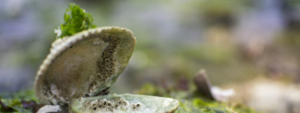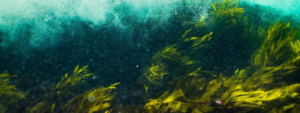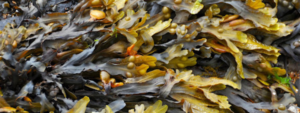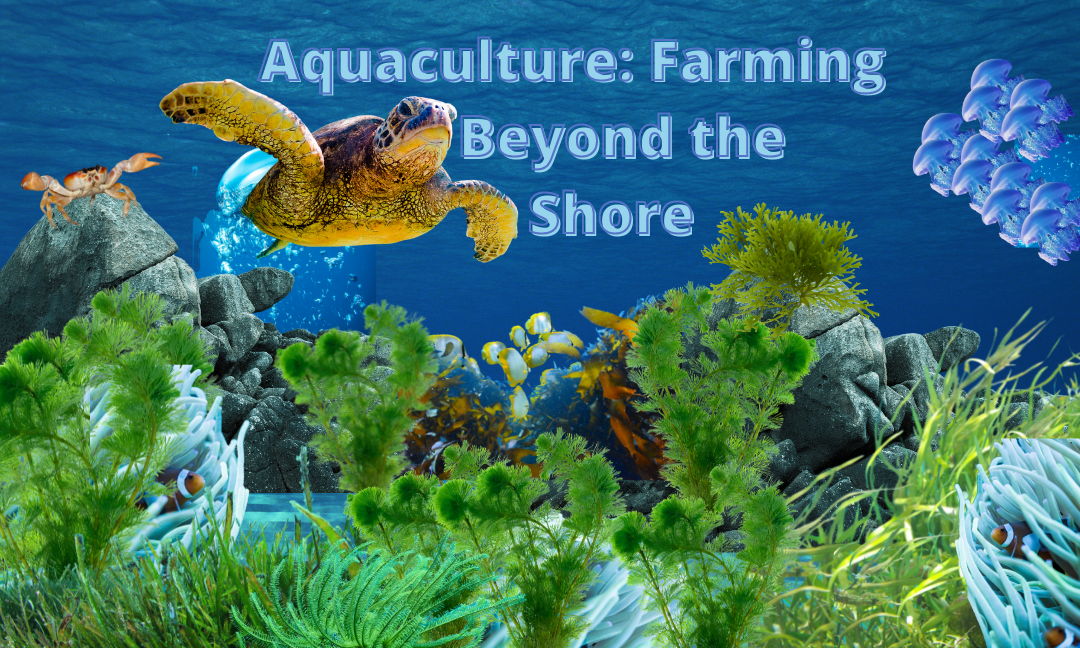Author: Amelia Ell
Editor: Emily Usprich-Couture
Graphic Designer: Alessia Carpino
Publisher: Rayna Almas
When we think of veggies we think of leafy greens, hearty root vegetables, stems, and tubers. What we often forget are seaweeds, which are frankly too cool to disregard. Contrary to their terrestrial counterparts, sea plants are grown in underwater oases along the shorelines of the country. This, along with the practice of farmed fishing, is called aquaculture.
What is Aquaculture?
Aquaculture is just what it sounds like: agriculture with everything to do with water. Farms are created in freshwater pens, intertidal zone pools, and open water nets. Canada is particularly well known for its farmed fish like Atlantic salmon and trout, as well as mollusks like oyster, mussels and clams. Here in Ontario, we’re big producers of rainbow trout in floating net pens. That said, farming of marine plants is also becoming more common as the benefits are getting to be more and more apparent.

Everything to Love About Aquaculture
For something so rarely spoken about, aquaculture is relevant to subjects ranging from job opportunity to environmental sustainability. For starters, marine farms save space on land and provide well-paying careers for rural seaside communities. They may also reduce demand for wild harvesting of endangered species such as trout and halibut.
Not only does aquaculture create a habitat for a variety of small sea life, but it also combats monoculture on land. Using seaweed as a replacement for crops like corn can reduce the need for biodiversity-crushing practices for animal feed production. It’s done best through an “integrated multi-trophic” strategy, which is just a fancy term to describe the complementary farming of salmon, mussels, and kelp all in one place. It’s like a mini ecosystem that keeps on giving! Leftover salmon feed is eaten by the mussels, while the waste from both is a source of nutrients for the kelp. Consequently, mussels grow to harvesting size 8-10 months quicker and kelp growth is boosted by 46%.

Superpowers of Seaweed:
You probably didn’t know that young seaweed plants are adorably termed “germlings,” or that seaweed isn’t a weed, it’s actually an algae! In recent years, Canada has been learning a lot about these ocean plants. On the coasts, we grow numerous red, green, and brown algae. Some of these are more than just cool to look at; the humble plants provide multitudes of nutritional and economic value.
Though it’s a superfood that has long been used in Asian cuisine, it’s also been playing an important role in sweet treats around the world. Seaweed gum is a natural thickener used in ice cream, pie fillings, sauces, and puddings. Sugar kelp is even being brewed into seaweed beer. Rockweed, a common variety in Canada, is also an ingredient in fertilizer and conditioner for mulch and soil. Components of seaweed can be found in a range of household items too, like medicine, shampoo, and cosmetics.

Protecting the World With Kelp
The coast of British Columbia is home to the widest variety of kelp biodiversity in the entire world! Similar to trees, these kelp forests create oxygen and store carbon. They also create habitats for marine life and help reduce ocean acidification. Rather than overtaxing and sapping the soil like traditional farming does, ocean area is actually improved where the kelp farms are implemented.
Along with its green farming process, kelp is also a unique substance and is currently being researched for new ways to help preserve the environment. New meat-free, highly nutritious foods are being developed like burger patties, chips, and jerky. As it turns out, kelp is more than just a meal for humans; it can be used in cow feed too! Cattle feed composed of just 3% seaweed reduces the livestock methane emissions by about 80% and improves the quality of both meat and milk. Lastly, companies are looking into using kelp as bio-packaging as a replacement for single-use plastics.
Ultimately, aquaculture provides us with more than just seafood. It saves space on land, offers the versatile resources of seaweed, and can even improve the quality of the oceans. With luck, these little germlings will grow up to build a better, greener world.
Sources:
https://www.gov.nl.ca/ffa/files/research-development-fdp-pdf-marine-plants.pdf
http://www.bofep.org/rockweed.htm
https://www.genomebc.ca/infobulletins/aquaculture
https://www.cascadiaseaweed.com/
https://www.aquaculture.ca/aquaculture-in-canada-intro
All images sourced from Pixabay

